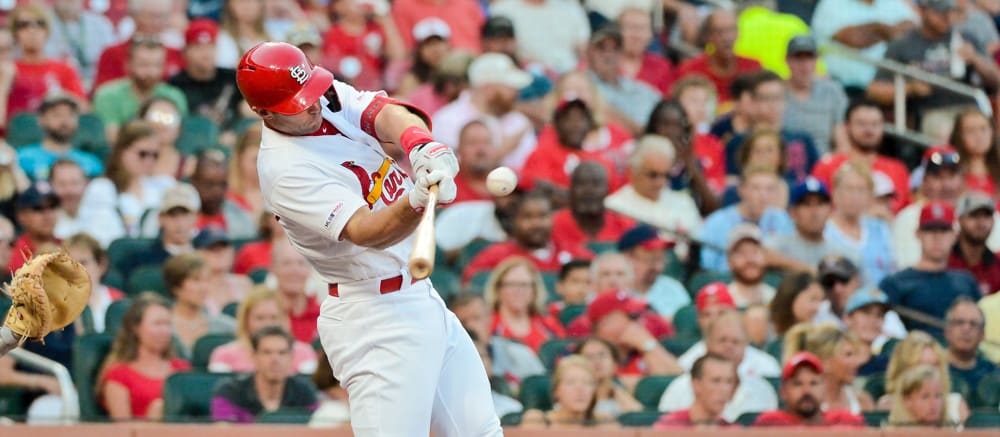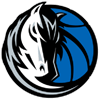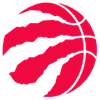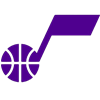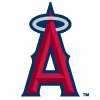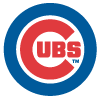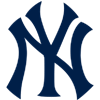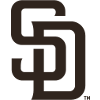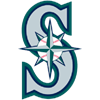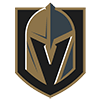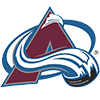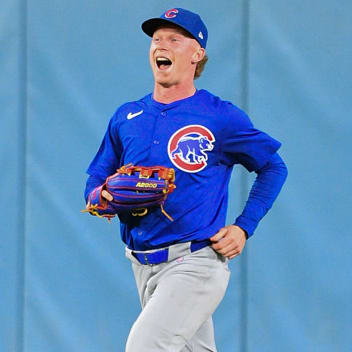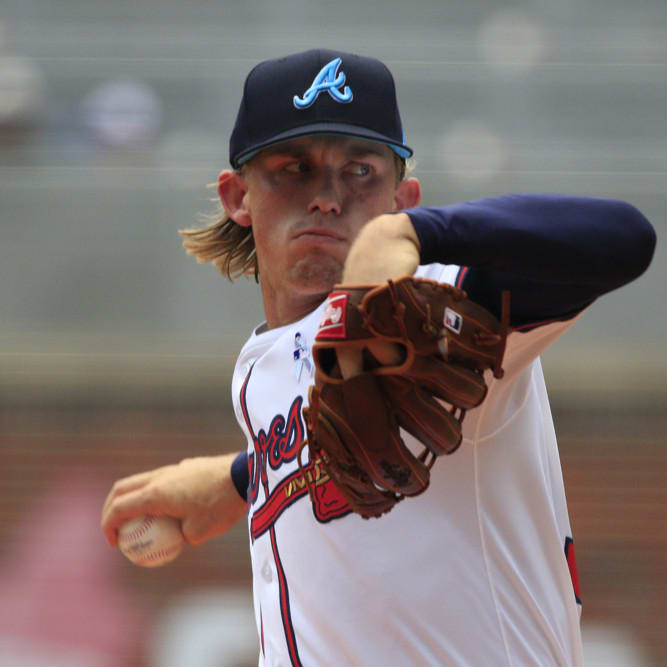I had two goals heading into my Tout Wars debut: meet many (maybe even most) of my favorite fantasy baseball analysts, and play well enough to be invited back for a second season.
Goal one has been achieved. For a group that's brought together by a distinctively competitive hobby whose members attempt to take each others' money several times a year, I've found the fantasy baseball community to be remarkably friendly and welcoming. I was never made to feel out of place despite being a rookie in a league that was formed when I was just four years old. (Sorry for making any fellow Touts feel old. I'm about to say nice things about you all for several paragraphs.)
As for the second goal, I won't know whether that's been achieved for some time, but I believe I've set myself up in a fine place. There's still six months' worth of lineup-setting, FAAB bids and trade talks to get through, but I left the draft having definitely avoided disaster, so I'll count that as clearing the first hurdle. I'll break down my process for building the team as well as my thoughts on my specific players below, but first, here's my roster in its entirety:
Catcher: Victor Caratini ($2), Luis Campusano ($2)
Also eligible: Francisco Alvarez ($4) once he plays five MLB games at catcher this season
Corner Infield: Paul Goldschmidt ($32), Rowdy Tellez ($17), Jeimer Candelario ($8), Luis Guillorme (4th reserve pick)
Also eligible: Christopher Morel
Middle Infield: Tommy
I had two goals heading into my Tout Wars debut: meet many (maybe even most) of my favorite fantasy baseball analysts, and play well enough to be invited back for a second season.
Goal one has been achieved. For a group that's brought together by a distinctively competitive hobby whose members attempt to take each others' money several times a year, I've found the fantasy baseball community to be remarkably friendly and welcoming. I was never made to feel out of place despite being a rookie in a league that was formed when I was just four years old. (Sorry for making any fellow Touts feel old. I'm about to say nice things about you all for several paragraphs.)
As for the second goal, I won't know whether that's been achieved for some time, but I believe I've set myself up in a fine place. There's still six months' worth of lineup-setting, FAAB bids and trade talks to get through, but I left the draft having definitely avoided disaster, so I'll count that as clearing the first hurdle. I'll break down my process for building the team as well as my thoughts on my specific players below, but first, here's my roster in its entirety:
Catcher: Victor Caratini ($2), Luis Campusano ($2)
Also eligible: Francisco Alvarez ($4) once he plays five MLB games at catcher this season
Corner Infield: Paul Goldschmidt ($32), Rowdy Tellez ($17), Jeimer Candelario ($8), Luis Guillorme (4th reserve pick)
Also eligible: Christopher Morel
Middle Infield: Tommy Edman ($22), Christopher Morel ($9), Nick Ahmed ($2), Geraldo Perdomo ($1)
Also eligible: Luis Guillorme
Outfield: Bryan Reynolds ($25), Tyler O'Neill ($25), Lars Nootbaar ($19), Jesus Sanchez ($7), Corey Dickerson (1st reserve pick)
Also eligible: Christopher Morel
Starting Pitcher: Zac Gallen ($22), Blake Snell ($15), Eric Lauer ($8), Tylor Megill ($5), JT Brubaker ($4), Vince Velasquez ($1), Trevor Williams (2nd reserve pick), Eury Perez (3rd reserve pick)
Relief Pitcher: Josh Hader ($24), Taylor Rogers ($4), Hunter Harvey ($2)
The Plan
I've discussed in the past, both in articles and on SiriusXM radio, how it's important to have an honest self-assessment of where you stand compared to your league-mates heading into the season. If you can say with a straight face that you're among the strongest and most plugged-in players in your league, you can afford to take more risks in both your overall strategy and the specific players you select, knowing that you're favored to outfox your opponents during the season and beat them to the next big thing on the waiver wire to paper over any gaps your risky approach may have left. If you're drafting against particularly tough competition, on the other hand, consider dialing back your more adventurous tendencies and playing a more conventional game, as you won't have the same luxury of making up for draft-day mistakes mid-season against such a group.
I was firmly in the latter camp for this draft and built my gameplan around that fact. Not only was the room made up of very strong and very experienced fantasy baseball players, nearly all of them were experienced in this specific format — a 12-team, NL-only auction draft that uses OBP instead of batting average alongside a few other minor tweaks, including a swing spot instead of a fifth outfielder. Here's a list of all 12 members of the league alongside their number of years in Tout Wars:
| Name | Previous Years |
|---|---|
| Peter Kreutzer | 24 |
| Scott Wilderman/Tim Prior | 22 |
| Phil Hertz/Dave Adler | 19 |
| Brian Walton | 19 |
| Todd Zola | 18 |
| Tristan Cockcroft | 16 |
| Derek Carty | 13 |
| Steve Gardner | 13 |
| Grey Albright | 10 |
| Ian Kahn | 4 |
| Erik Halterman | 0 |
| Rick Graham | 0 |
That's double-digit years worth of experience for nine of the 10 returning members. The only exception is Ian Kahn, who's played just four years in Tout Wars but has already won twice (head-to-head in 2019 and NL-Only in 2022). The two rookies, Rick Graham and I, were certainly thrown in the deep end. To make matters worse, my sense was that most of the league prefers auctions to snake drafts, while I'm the other way around — not because I don't see the fun in an auction but simply because I've had far less experience with them, and thus far more frequently leave the draft feeling like I made multiple wrong turns. I had just had one such disappointment five days earlier, when I was far too passive in the RotoWire Staff Keeper League auction and let the top tiers pass me by, finishing the draft with $8 still available.
Based on my self-assessment, I didn't think there was any way I was going to outsmart a room full of experienced auction specialists in terms of roster construction. No one knows more about how to construct a Tout NL team than those who have been constructing Tout NL teams for years, and while unconventional builds are certainly possible (Doug Dennis won last year's Tout AL league without drafting a single starting pitcher), the odds of a rookie like me finding the magic formula that was missed by the other 11 members of the table seemed microscopic.
Instead, my aim was to draft a team that looked as much like a conventional Tout Wars team as possible, pinning my hopes instead on the specific players I selected. While the years of experience most of the room had on me are undeniably helpful in developing the general skill of player evaluation, all of us had been evaluating this specific set of players for the same amount of time. I felt comfortable with my assessment of the player pool and thought that if I could simply fill the slots of a conventional-looking Tout Wars roster with players I liked, I'd have a chance.
The first step of my quest to build a Tout Wars roster that looks the part was to give up my (over)reliance on tools like the FanGraphs Auction Calculator. While I highly recommend the tool in general, auction calculators come with the unavoidable flaw that they don't always reflect actual, observed auction behavior. Frequently, I've found the values suggested by the calculator are off by several dollars on entire groups of players, often underrating top closers and speed guys while overrating catchers and non-closing relievers. You could make the case for bowing to our robot overlords and assuming that it's the human drafters who are wrong, but that's exactly the sort of gamble I was hoping to avoid in this draft. If I wanted to draft a team that looked like a Tout Wars team, I had to turn to actual Tout Wars drafts to build my values.
I took my rankings, split them up into hitters and pitchers, and then split them up again, separating starters from relievers and pulling out catchers from the rest of the batters, as catchers and relievers are groups whose value as a whole can shift by a few dollars from draft to draft. I then took the dollar values from all 12 rosters in both Tout AL and Tout NL in each of the last two seasons. I split those values up into the same four groups and then averaged the four, weighing the NL drafts and the 2022 drafts slightly more heavily. That gave me four lists of values telling me, say, what the top closer typically goes for, how much I'd have to pay for the 10th catcher, or what I should expect to pay for the 30th-best starting pitcher. I could have gone further back, but I was nervous about any weirdness coming from the short 2020 season, and since the intention was only ever to use these numbers as a guide, I figured that adding more years wouldn't be the best use of prep time.
Once I'd ranked my players and figured out what the n-ranked player typically goes for in recent Tout Wars drafts, the next step was figuring out not what any old Tout Wars team looks like but specifically what a successful Tout Wars team looks like. To that end, I took the top three teams from last year's NL-only and AL-only leagues and pulled out all the values they spent for each of their players, keeping hitters and pitchers separate. I then simply averaged the values for all six teams as follows:
Ian Kahn (winner, NL) | Phil Hertz (t2nd, NL) | Scott Wilderman/Tim Prior (t2nd, NL) | Doug Dennis (winner, AL) | Mike Podhorzer (2nd, AL) | Larry Schechter (3rd, AL) | Average | |
|---|---|---|---|---|---|---|---|
| Hitter #1 | 37 | 30 | 27 | 43 | 28 | 34 | $33 |
| Hitter #2 | 35 | 26 | 26 | 33 | 22 | 27 | $28 |
| Hitter #3 | 33 | 21 | 25 | 31 | 22 | 22 | $26 |
| Hitter #4 | 11 | 21 | 21 | 25 | 21 | 21 | $20 |
| Hitter #5 | 10 | 19 | 18 | 19 | 18 | 17 | $17 |
| Hitter #6 | 9 | 16 | 16 | 12 | 16 | 16 | $14 |
| Hitter #7 | 8 | 11 | 14 | 11 | 15 | 14 | $12 |
| Hitter #8 | 7 | 11 | 13 | 7 | 14 | 9 | $10 |
| Hitter #9 | 7 | 10 | 2 | 5 | 8 | 6 | $6 |
| Hitter #10 | 5 | 9 | 1 | 5 | 7 | 6 | $6 |
| Hitter #11 | 4 | 4 | 1 | 3 | 3 | 5 | $3 |
| Hitter #12 | 3 | 3 | 1 | 2 | 1 | 5 | $3 |
| Hitter #13 | 3 | 3 | 1 | 2 | 1 | 1 | $2 |
| Hitter #14 | 1 | 2 | N/A* | 1 | 1 | 1 | $1 |
| Pitcher #1 | 21 | 20 | 25 | 14 | 23 | 23 | $21 |
| Pitcher #2 | 20 | 19 | 22 | 12 | 20 | 22 | $19 |
| Pitcher #3 | 12 | 16 | 17 | 8 | 13 | 9 | $13 |
| Pitcher #4 | 9 | 7 | 15 | 8 | 9 | 7 | $9 |
| Pitcher #5 | 6 | 3 | 8 | 7 | 7 | 7 | $6 |
| Pitcher #6 | 6 | 3 | 3 | 6 | 5 | 5 | $5 |
| Pitcher #7 | 5 | 3 | 1 | 4 | 4 | 1 | $3 |
| Pitcher #8 | 4 | 2 | 1 | 1 | 1 | 1 | $2 |
| Pitcher #9 | 4 | 1 | 2* | 1 | 1 | 1 | $2 |
*Wilderman and Prior were the only team in this group to use their swing spot on a pitcher. I've added the dollar they spent on that player to their ninth pitcher, though it doesn't change the average.
Note that Doug Dennis' unusual build does skew the average, but I didn't mind that, as I expected the success of that team to have at least a mild effect on prices this year. I didn't mind the slight skew, as the intention of this exercise was only to establish a baseline set of values rather than to set exact dollar targets. That's also why I didn't deem it worth the time to add in six more rosters from 2021, as they likely would have only moved these figures by a dollar or two.
These ballpark figures gave me an outline for my roster to start the draft, and each time I bought a player, I slotted him at the closest spot, adding or subtracting a dollar or two from the surrounding slots if needed. I'd consider the approach a success, as I ended the draft having spent within $3 of my target amount at each spot. I ended up spending $6 more in total on pitchers than my formula suggested, but that number drops to just $2 more than suggested if I leave out the outlier Doug Dennis team, which I wasn't trying to replicate.
The Players
We're nearly 2,000 words in, and I've yet to mention anything about my specific players. That's intentional, as my top priority was sticking within my structure rather than going all-in on my personal favorites. It was more important to me to find one hitter for each slot whose price happened to be right on the day than to land any specific player. That said, I did end up liking (most of) the players on my roster, so here are some brief thoughts on all 27 of them. I've included the price I actually paid alongside the price I intended to pay for whoever I got in that slot as well as the maximum price I was willing to pay for that specific player.
Hitter No. 1: Paul Goldschmidt, 1B, $32 — Slot Target: $33; My Max: $33
I'm not higher than the market on Goldschmidt, but all I needed was to not be low on him to like him at this price, and I'm certainly not low on him. I would have slightly preferred to land Austin Riley ($31), but there were only eight total players who went within three dollars of my slot target, so this was the spot where I most feared getting blanked. If the entire tier went for more than I was comfortable with, it would have forced a mid-draft adjustment that I wasn't sure I was capable of making elegantly. The worst auctions I've had in the past have seen me whiff on the top tier entirely only to wind up overpaying for second-tier players. I was happy to avoid that mistake here, even if I'd prefer the backbone of my offense to be younger than 35.
Hitter No. 2: Bryan Reynolds, OF, $25 — Slot Target: $28; My Max: $27
If anything, I'm slightly low on Reynolds this season, but nobody in the room seemed to love him, either, as I was able to get him for $2 cheaper than where I have him ranked. Reynolds' park and team context are as bad as it gets, and he stood out in neither contact (23.0 percent strikeout rate) nor power (7.9 percent barrel rate) last season, but he also has just about the most locked-in role of any hitter in the league due to the lack of competition in Pittsburgh. That steady supply of solid plate appearances should be particularly useful in a league as deep as this one.
Hitter No. 3: Tyler O'Neill, OF, $25 — Slot Target: $26; My Max: $28
I actually had Reynolds slotted in as hitter No. 3 until I bought O'Neill soon after. His purchase means I'd saved $6 on my top three hitters as compared to my slot targets, savings I quickly spent on my top starting pitchers. O'Neill is the anti-Reynolds in many ways. His playing time is far less secure than most hitters in his price range, as the Cardinals have a crowded outfield, and his skillset is far more volatile. He's struck out 29.5 percent of the time over the last two seasons, but he's also hit 31.3 homers and 18.9 steals per 600 plate appearances over that stretch. I was conscious of adding too much volatility — something I'm naturally inclined toward but that is far more dangerous in strong, deep leagues — but I felt I could afford it after going quite safe with my top two bats.
Hitter No. 4: Tommy Edman, 2B/SS, $22 — Slot Target: $20; My Max: $26
If Edman got much closer to my maximum price, I wouldn't have been able to fit him in, but I either got a nice bargain or was overvaluing him heading into the draft. If it's the latter, it's possibly because I'm underrating the effect that his career 6.1 percent walk rate has on his value in an OBP league. Still, he's an unquestioned everyday regular and a candidate to lead off for a good lineup, and no other National Leaguer stole at least 30 bases in both of the last two seasons, so I thought it was a fine price to pay for the most stable source of speed in the entire pool. Additionally, his 2B/SS eligibility gave me flexibility as I built out the rest of my middle infield.
Hitter No. 5: Lars Nootbaar, OF, $19 — Slot Target: $17; My Max: $22
I guess I'm a Cardinals fan this year? I didn't set out to have four of my five most expensive hitters to play in St. Louis, but while stacking is typically a DFS tactic, I don't think it's harmful in season-long leagues. More importantly, I was able to get a guy I really like for an acceptable value. With someone as buzzy as Nootbaar has been this season, you never know how much his price will be inflated, but I don't think I was pushed too far. There were other values in this range of outfielders — Brandon Nimmo ($19), Jesse Winker ($16) and Seiya Suzuki ($15) — whom I would have liked as much if not more, but I'm still very happy with this pick. Nootbaar's excellent plate discipline (he walked 14.7 percent of the time last year) is a key part of his appeal, making him even more of a target in OBP leagues like this one.
Hitter No. 6: Rowdy Tellez, 1B, $17 — Slot Target: $14; My Max: $24
I went to my upper limit for this slot and wound up limiting myself to single digits for the rest of my hitters, but I couldn't turn down Tellez at this price. I like Tellez more than I like either Christian Walker or C.J. Cron, both of whom went for $22. As with Nootbaar before him and Morel after, I was happy that I wasn't pushed close to my max value on a player I knew I was higher on than most. If my season goes well, this trio performing more in line with my max prices than my actual prices will be a big part of the reason why.
Hitter No. 7: Christopher Morel, 2B/3B/OF, $9 — Slot Target: $12; My Max: $15
I'm very high on Morel compared to the market, so I was pretty sure I wouldn't have to go anywhere near my max bid to get him. With this league using 15 games for positional eligibility rather than 20, he adds 3B-eligibility, making him even more versatile. His strikeout concerns (first-percentile whiff rate) are very real, but his power (91st-percentile barrel rate) and speed (88th-percentile sprint speed) are both real as well, and I'm not concerned about playing time for a player with his defensive flexibility. He's a true 10th man who should start over whomever happens to be unavailable for a given game and should cut down on the whiffs as he gets more MLB experience, as he struck out a respectable 23.6 percent of the time in the minors. Among the power/speed guys who went for single digits in this draft, he's easily my favorite.
Hitter No. 8: Jeimer Candelario, 3B, $8 — Slot Target: $10; My Max: $10
Candelario finished with a wRC+ of 120 or above in two of the last three seasons, and he has a clear path to everyday at-bats as a member of the struggling Nationals. His price is rightly depressed by the fact that he's coming off a poor season (.633 OPS), but even a modest bounce-back makes him the sort of steady compiler that's vital to deep-league success.
Hitter No. 9: Jesus Sanchez, OF, $7 — Slot Target: $6; My Max: $9
This is a bet on Sanchez winning the Marlins' center field job over Bryan De La Cruz by virtue of the fact that the latter has options remaining while Sanchez doesn't. It's possible this roster would look better with Elias Diaz ($7) in this slot and a $2 outfielder, instead of Sanchez and one of my $2 catchers.
Hitter No. 10: Francisco Alvarez, UT, $4 — Slot Target: $6; My Max: $5
Here's the part where I talk about what might be the biggest error of my draft prep: separating out catchers from the rest of the hitter pool. (Alvarez isn't a catcher on day one, but he will be once he gets into five big-league games behind the plate, which should happen soon after he gets called up.) The motivation behind that decision was that catcher values tend to move collectively within a given draft more than any other position does. But my approach ignores the fact that the catcher pool is at a relative peak this season, so expecting this year's catcher spending to line up with that of the past couple seasons was unwise. Here are the values my method gave for the first 12 catcher slots, as well as the values from the auction calculator and the actual values from the draft:
My $ | Auction Calculator $ (ATC) | Actual $ | |
|---|---|---|---|
| C1 | 22 | 27 | 25 |
| C2 | 20 | 26 | 24 |
| C3 | 17 | 24 | 20 |
| C4 | 14 | 19 | 18 |
| C5 | 13 | 16 | 16 |
| C6 | 11 | 16 | 14 |
| C7 | 10 | 10 | 12 |
| C8 | 9 | 10 | 12 |
| C9 | 9 | 7 | 11 |
| C10 | 7 | 7 | 7 |
| C11 | 5 | 6 | 6 |
| C12 | 5 | 6 | 5 |
| Total | 142 | 174 | 170 |
The auction calculator did slightly overestimate the prices for the very top catchers, but on the whole, the goal of separating out backstops in order to have my values match those from past Tout Wars drafts was a failure. The Alvarez pick also doesn't mesh with my goal of trying to be as conventional as possible with my roster construction, as he'll clog up one of my bench spots for the foreseeable future. Still, I think the value is fine in a vacuum, and a cheap upside play can only go so wrong. With the mid-tier C1s going for a few dollars above both my formula and the auction calculator, I don't think it was a terrible decision to go with bargain backstops and allocate more money elsewhere, but I'm unconvinced that my process was correct.
Hitter No. 11: Victor Caratini, C, $2 — Slot Target: $3; My Max: $1
Hitter No. 12: Luis Campusano, C, $2 — Slot Target: $3; My Max: $1
This is the first place where I went over my max value, and I wound up having to do it twice, but I don't think I had much choice once I missed out on the top and middle tiers of catchers. For whatever reason, pretty much nobody was getting $1 catchers in this draft. Each of the four drafts that went into my formula (the AL and NL Tout Wars auctions in 2021 and 2022) saw six or seven catchers go for a buck, but only Curt Casali could be had for the minimum this time around.
Hitter No. 13: Nick Ahmed, SS, $2 — Slot Target: $2; My Max: $0
Hitter No. 14: Geraldo Perdomo, SS, $1 — Slot Target: $1; My Max: $0
I again went over my max values for these two, though the difference between my least favorite one-dollar players and my favorite zero-dollar players is small. I wish I had found an extra dollar somewhere to get Kevin Newman ($3) instead, but once he went beyond what was a very limited budget at that point in the draft, I pivoted to this pair. I just needed someone with regular playing time at shortstop, as Tommy Edman was my only player eligible at the position before these two. I'm not at all excited about either of them, but all I need is for one of them to win the job and play regularly.
Pitcher No. 1: Josh Hader, RP, $24 — Slot Target: $21; My Max: $24
While I'm unconvinced that my attempts to mimic past Tout drafts had the desired effect when it came to catchers, I'm very happy with how it worked out in regards to relievers. Based on my weighted average of the last two years' worth of Tout AL- and NL-Only leagues, I'd calculated the top reliever off the board should go for $24. With Edwin Diaz out of the picture, Hader is the clear top closer in the NL for me, so when the bidding reached $23, I was happy to go the additional dollar and lock him up. Hader was nominated quite early in the process, and I don't think I would have made that call had I entered the draft with the intention to wait and see how the closer market developed. As it turns out, the market developed in a way that made me even happier with my Hader buy, as the next three closers (Devin Williams, Raisel Iglesias and Ryan Helsley) all went for $23. My formula suggested that the second closer should go for $21 and the third and fourth should each go for $18, so there was clearly some inflation as compared to past seasons, and I'm happy to have avoided it by paying a fair price for the guy at the top.
Pitcher No. 2: Zac Gallen, SP, $22 — Slot Target: $19; My Max: $23
Pitcher No. 3: Blake Snell, SP, $15 — Slot Target: $13; My Max: $17
Slotting Hader into my top pitcher spot meant I was giving up on getting a top-tier starting pitcher, though I'd essentially priced myself out of the very top group before the draft even started by allotting just $21 (plus or minus a few bucks) to my most expensive pitcher. I'm not normally someone who pays up for the top closer at the expense of getting an early starter in snake drafts, but my review of last year's most successful Tout teams suggested that it was a very viable approach. Four of the six teams that finished on the podium in Tout AL and Tout NL last year had a closer as their most expensive pitching purchase. Doug Dennis didn't buy a single starter, while the other five spent either $20 or $22 on their ace. That gives me hope that this one-two punch will be a viable backbone for my rotation in a league this deep. I had Gallen and Snell as the ninth- and 15th-ranked starters heading into the draft and was able to get them for the 11th- and 18th-highest prices.
Pitcher No. 4: Eric Lauer, SP, $8 — Slot Target: $9; My Max: $8
I had to pinch pennies a bit to round out the rest of my staff after hitting the high end of my intended range for my first three pitchers. Given those budget constraints, I needed to make sure I got enough innings from the rest of my pitchers, so it didn't matter too much to me which starter I got as long as he was competent and had a safe role. Trevor Rogers ($9), Justin Steele ($9), Alex Wood ($8), Carlos Carrasco ($7) and Edward Cabrera ($6) are all starters in this range who I might have slightly preferred, but I don't have a problem with Lauer.
Pitcher No. 5: Tylor Megill, SP, $5 — Slot Target: $6; My Max: $10
As you can see from my max bid, I'm quite high on Megill compared to the market, and wouldn't have been able to slot him in if others in the room felt the same way. At the time of the draft on Sunday, I had Megill as slightly more likely than David Peterson (who went for $7) to open as the Mets' fifth starter, but it was Peterson who started Monday's Grapefruit League game against the Cardinals while Megill came on in relief. If I made the wrong call there, I'll be opening the season with my fourth starter pitching in relief for his major-league club, which seems like an error. That said, a $5 gamble can only have so much downside, and the payoff could be big should Megill spend the bulk of the year as a starter.
Pitcher No. 6: Taylor Rogers, RP, $4 — Slot Target: $3; My Max: $9
Rogers was actually nominated quite early in the draft, before I'd purchased Lauer or Megill. The price for talented relievers who should earn at least a few saves but won't be true closers unless something strange happens hadn't yet been sorted out, and it ended up settling in a bit higher than $4. I viewed Rogers similarly to Seranthony Dominguez ($7), Giovanny Gallegos ($6) Craig Kimbrel ($6), who all went for a little bit more. I have no specific attachment to Rogers, though I do think he could eat a bit more into Camilo Doval's save total than the market seems to be expecting. The important thing is I got a viable second closer for a fair price, even if it came at a surprisingly early part of the draft.
Pitcher No. 7: JT Brubaker, SP, $4 — Slot Target: $3; My Max: $4
I needed stable innings from my fourth starter since my third (Megill) could wind up pitching in relief. Brubaker provides that, as he should have a locked-in role in a pitcher-friendly park. His 4.99 career ERA is ugly, but it comes with a 3.96 xFIP, as his strikeout, walk and groundball rates have all been right around league average in each of his three seasons.
Pitcher No. 8: Hunter Harvey, RP, $2 — Slot Target: $2; My Max: $4
I had Harvey priced as a low-end RP2 in this format, so I'm happy to get him at an RP3 price. I think he's the most talented pitcher in the Washington bullpen, and the news that Kyle Finnegan could pitch earlier in games at times may be a reflection of the fact that the Nationals are open to Harvey stealing the ninth inning. Health is of course a major concern, but no $2 player is without major concerns.
Pitcher No. 9: Vince Velasquez, SP, $1 — Slot Target: $2; My Max: $1
I nominated Velasquez a bit earlier than most of the pitchers in his range had started going off the board, as it had already become clear to me at that point that I would likely need a minimum-price pitcher to round out my staff. As it turns out, Johnny Cueto was the only other pitcher who went for a buck whom I'd rather have, and I didn't think I'd be able to sneak him through at that point. I am very aware of Velasquez's faults, having watched him on the Phillies for five and a half seasons, but pitching in PNC Park should keep him as a viable option for leagues this deep as long as he remains in the rotation.
Reserve Rounds: Corey Dickerson, Trevor Williams, Eury Perez, Luis Guillorme
I drew the last reserve pick, but I was happy with who was available at the first turn. Dickerson should give me more competent at-bats than I had any right to expect at this point in the draft, and he'll start for me at least until Alvarez is called up. Williams is a competent enough starter in this format and is someone I would have spent a dollar on had I not landed Velasquez. As my seventh starter, I won't have to play him every week. Perez is someone I haven't really had much interest in, as I have my doubts about Miami's willingness to move him quickly, but he was too talented to still be on the board at that point. He should be on someone's roster, though he maybe shouldn't be on mine, as I'm already stashing one rookie in Alvarez. Guillorme's 2B/3B/SS eligibility makes him a nice bench player in this format, as does his career .354 on-base percentage, even if he's a complete nonfactor in power and speed.


